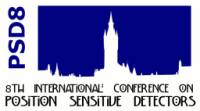Speaker
Mr
Craig Brown
Description
Improving the quantum efficiency (QE) and spectral resolution of X-ray sensitive charge-coupled devices (CCDs) for astronomy and planetary science applications is the primary focus of this work. These improvements are aimed at broadening the energy response of the detectors from 0.2 keV to >15 keV). Extending a the high energy response of a MOS (metal-oxide semiconductor) CCD can be achieved by increasing the depletion depth. High resistivity silicon, high dopant concentrations and high substrate voltages can all improve the high energy QE. A greater depletion depth results in a smaller number of registered multi-pixel events and, as such, also leads to an improvement in energy resolution for non-isolated event spectra. A third method of improving the QE of a CCD at higher X-ray energy is to increase the angle of incidence. An X-ray entering a sensor at a shallow angle travels through a greater region of depleted silicon and is therefore much more likely to interact in the depletion region. This study outlines the most recent work carried out at the University of Leicester focused on investigating the effect of changing the incidence angle of X-rays interacting with a CCD. A Monte Carlo model has been developed and used to investigate the effect of tilting a CCD on the quantum efficiency, energy resolution and multi-pixel event distribution as a function of angle. Experimental verification of the model is also presented.
Author
Mr
Craig Brown

